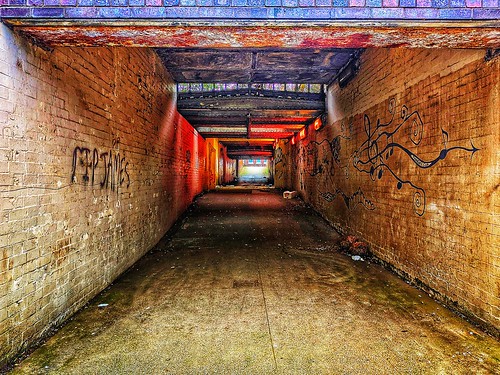NYC is now using AI at some subway stations to track when and how fare evaders are getting through
Subway #Subway

Loading Something is loading.
Thanks for signing up!
Access your favorite topics in a personalized feed while you’re on the go. download the app
The next time you walk through the turnstile at a New York City subway station, AI might be watching you.
The city’s subway system is now using AI surveillance technology to track fare evasion. The AI integrates with existing camera infrastructure in stations to monitor video feeds in real time, providing 24/7 data on when and how people are getting onto the subway without paying.
Though the technology is currently only in use at 7 stations across the city, NYC’s Metropolitan Transport Authority (M.T.A.) plans to expand its use to two dozen more stations by the end of the year. An M.T.A. spokesperson declined to tell Insider which stations the technology is in use at or those that it plans on expanding to.
This comes at a time when the M.T.A. has been grappling with how to deal with fare evasion after it lost $690 million to fare evasion last year, according to a May report. The agency recently announced the first increase of the base fare since 2015.
The AI video analytics system, called “DETECTOR,” was developed for the Barcelona subway network by Spanish software company AWAAIT — the company’s name is the phonetic spelling of the Catalan word ‘aguait’, which means watchful or vigilant. Though the M.T.A. confirmed that it is the same AI system being used, the agency references the system in its report much more vaguely, calling it “computer technology” that counts fare evaders.
This might be to differentiate from how the technology is being used in Barcelona — AWAAIT advertises that their system provides ticket inspectors with near-instant fare evasion alerts in an app on their smartphones, “allowing for rapid and selective interventions before the offenders reach the platform.” Inspectors can then log the outcome of each incident, i.e., whether an offender was apprehended, fined, or not fined, in the app.
A spokesperson for the M.T.A. said that in NYC, the technology is only being used to generate reports and quantify the amount of fare evasion happening, not to identify fare evaders or assist law enforcement. AI-powered cameras have been used for years to detect everything from public intoxication to drowsiness in delivery drivers.
The AI’s analysis indicated that around 50% of subway evasion comes from people walking in through the emergency exit gates, 20% jump or climb over the turnstile, and 12% duck underneath. Leonardo Munoz/VIEWpress via Getty Images
“It helps us just measure the amount of fare evasion happening,” the spokesperson told Insider. “It’s not alerting any NYPD officers in real time if fare evasion takes place, it’s not used to ping an officer and have them go after a person who fare evades. That’s not how the system works. It’s just our effort to see what is happening out there.”
The new program is certainly more thorough than MTA’s existing system for estimating fare evasion, which involves sending out a team of about 10 human checkers across the system to conduct one-hour surveys, making a count of all unpaid entries into the system across that hour.
With AWAAIT’s AI system, the M.T.A. can now track both the times of day when spikes in fare evasion occur and the different ways fare evaders are entering the transit system, the first time it’s had those numbers. In its latest Blue-Ribbon Panel report, the agency says that the biggest spike happens around 3 to 4 p.m., coinciding with school dismissal times, with a smaller spike happening around morning rush hour.
The AI’s analysis has also indicated that around 50% of subway evasion comes from people walking in through the emergency exit gates, 20% jump or climb over the turnstile, 12% duck underneath, and around 16% do what the M.T.A. has termed “back-cocking,” a method that has recently spread on social media as a “subway hack” that involves pulling the turnstile backwards and slipping through the gap.
Although the agency couldn’t confirm any correlation between the data produced by the AI system and the changes in the transit system it plans on making, it has proposed a range of new solutions in its latest report, from improving outreach to students to adding new fare gates that are harder to get through without paying and would allow for the elimination of the emergency gates.
“Social media chatter makes clear that many see fare evasion as outright cool or somehow socially justified,” the report reads. “It is neither.”